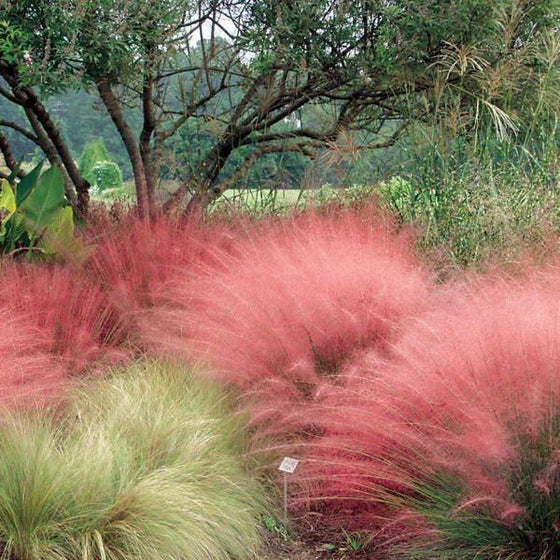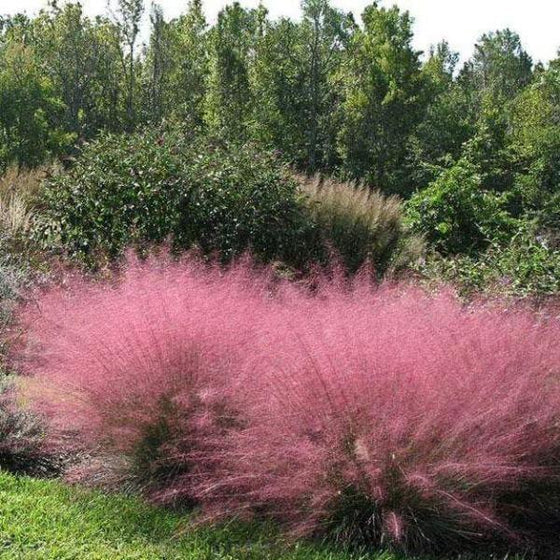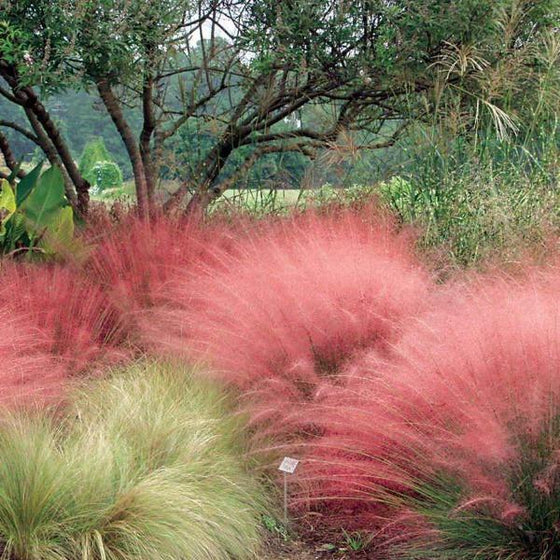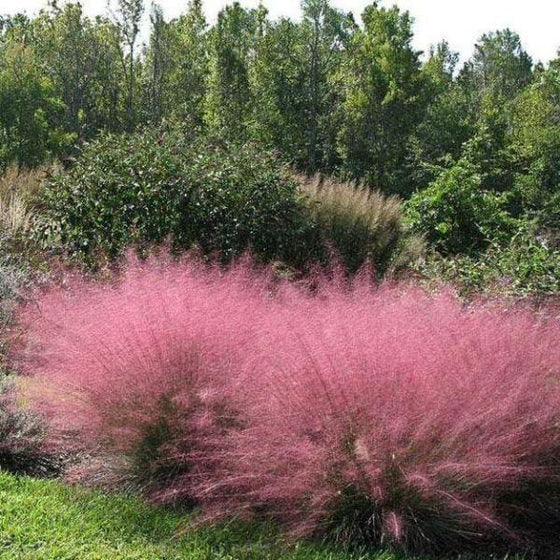Muhlenbergia capillaris (Pink Muhly Grass) – 3 Gallon
Muhlenbergia capillaris (Pink Muhly Grass) – 3 Gallon
19 in stock
Full sun and Partial shade
Couldn't load pickup availability
Muhlenbergia capillaris (Pink Muhly Grass) – 3 Gallon
Description
Muhlenbergia capillaris, commonly known as Pink Muhly Grass, is a stunning native ornamental grass prized for its airy, cloud-like plumes of vibrant pink flowers that appear in late summer and fall. This clump-forming, warm-season grass features fine-textured, deep green foliage that forms a graceful mound, providing year-round interest and movement in the landscape. Exceptionally drought tolerant, deer resistant, and low maintenance, Pink Muhly Grass is perfect for borders, mass plantings, meadows, or as a striking specimen in gardens and containers. Its showy blooms attract pollinators and make excellent cut or dried flowers.
Key Features
- **Botanical Name:** Muhlenbergia capillaris
- **Common Name:** Pink Muhly Grass
- **Container Size:** 3 Gallon
- **Mature Size:** 2–3 ft tall (foliage), 3–4 ft tall (with plumes), 2–3 ft wide
- **Growth Habit:** Clump-forming, upright, arching
- **Bloom Color:** Airy, pink to pinkish-purple plumes
- **Bloom Time:** Late summer to fall
- **Foliage:** Fine-textured, deep green, turns tan in winter
- **Sunlight:** Full sun (best color and flowering) to light shade
- **Soil:** Well-drained; tolerates sandy, rocky, or poor soils
- **Water Needs:** Low; drought tolerant once established
- **Hardiness Zones:** USDA 6–10
- **Maintenance:** Very low; cut back to 3–6" in late winter or early spring before new growth
- **Special Features:** Deer resistant, drought tolerant, native plant, pollinator friendly, excellent for cut and dried arrangements, erosion control
Care Instructions
1. **Planting:**
- Choose a sunny location with well-drained soil.
- Space plants 2–3 feet apart for mass plantings or borders.
2. **Watering:**
- Water regularly during establishment.
- Once established, water only during prolonged dry spells.
3. **Pruning:**
- Cut back to 3–6 inches in late winter or early spring before new growth emerges.
4. **Fertilizing:**
- Rarely needed; a light application of balanced fertilizer in spring is sufficient.
5. **Mulching:**
- Add a 2–3 inch layer of mulch to retain moisture and suppress weeds.
Landscape Uses
- Borders and beds
- Mass plantings and meadows
- Accent or specimen plant
- Containers and patio gardens
- Erosion control on slopes



